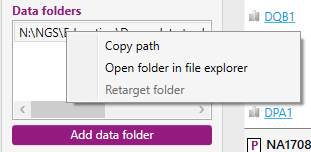Open NGSengine
Upon opening NGSengine, you will see the screen below:
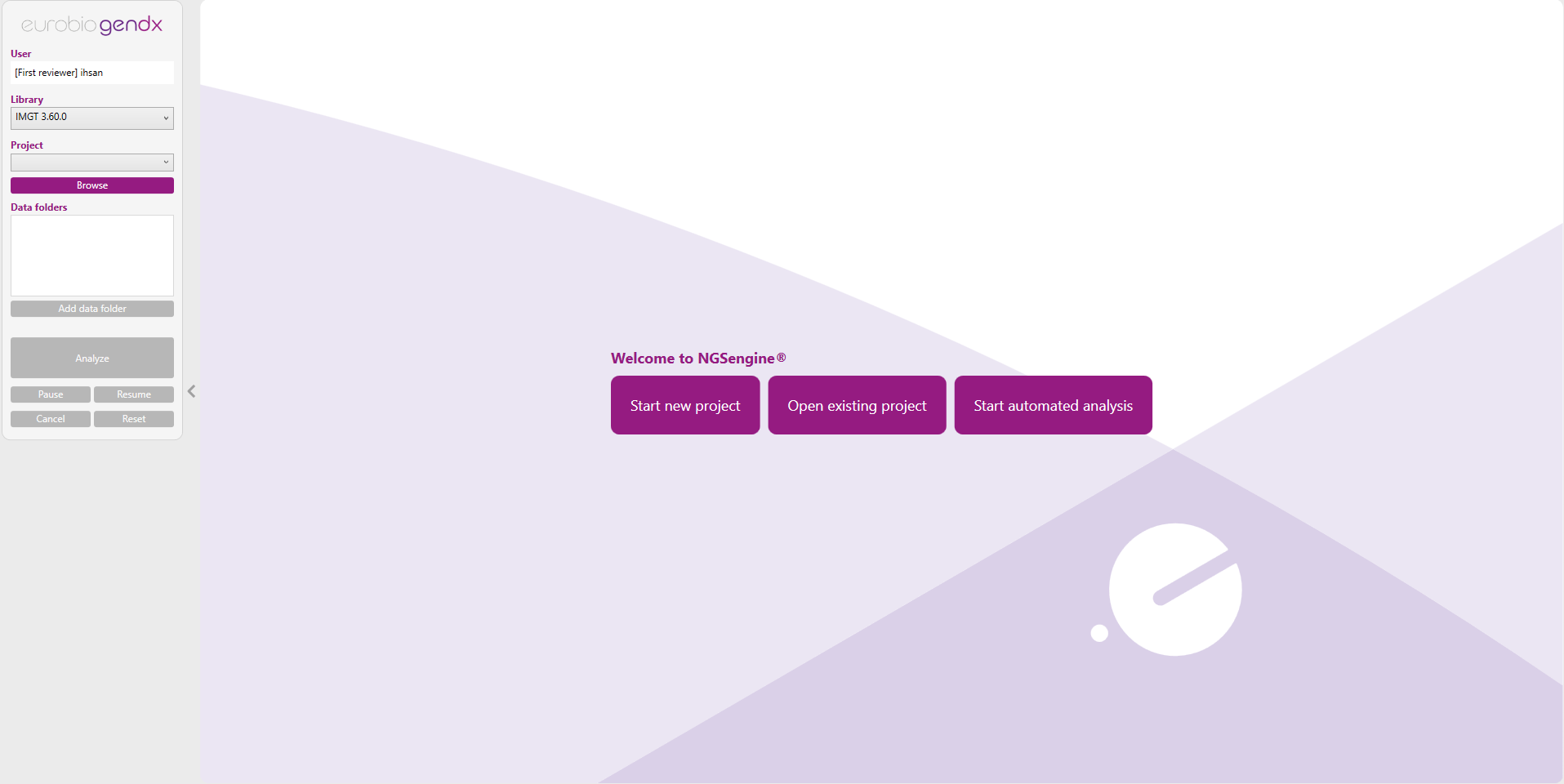
Here you have the options to start a new project, start automated analysis or open a project that was created earlier.
The side bar helps navigating through the project.
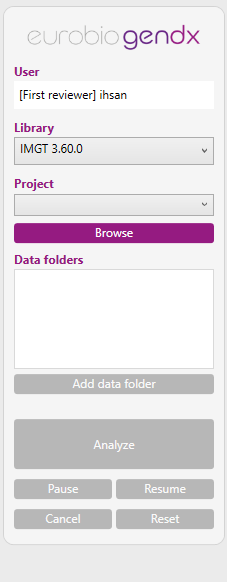
The side bar shows:
- 'User' window: shows the current user and the review level
- 'Library' window: shows the selected IMGT library version
- 'Project': shows the current Project (and via the dropdown, the previous projects)
- 'Browse' button: to browse to all project folders
- 'Data folders' menu: shows the folders used for data management
- 'Add data folder' button: to add additional NGS data to the Project
- 'Analyze' button: to start analysis of all data in the Project
- 'Pause', 'Resume', 'Cancel' and 'Reset' buttons: to pause, resume, cancel or reset ongoing analyses
As a default, the side bar will be visible. At any time during the use of NGSengine, the side bar can be closed or opened by clicking on the below symbol:
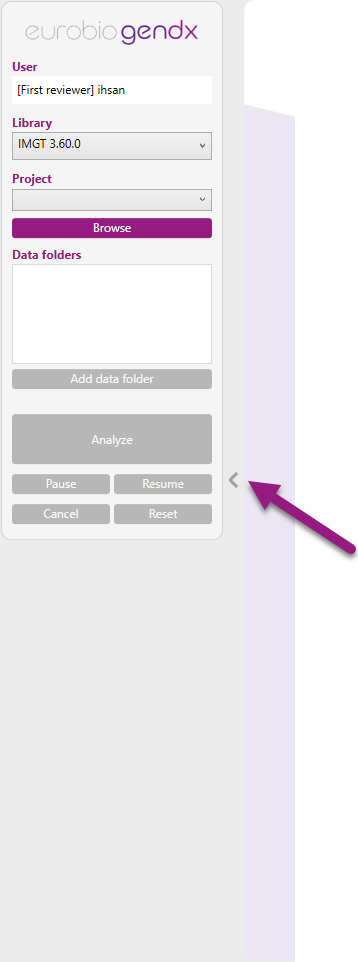
In the 'Library' window, the IMGT version can be selected by means of a drop-down menu:

The first time an IMGT library version is used for analysis, NGSengine will start by making a temporary library file (cache file) on your computer. During this time, the 'Library' window is greyed out in order to prevent changing the selected IMGT version. Also a rolling circle is shown, to indicate that NGSengine is making the library cache file:

The location where the current project is stored can be located by means of a right mouse click on the 'My Project' button. Subsequently select either 'Copy path' or 'Open folder in file explorer'.
It is also possible to remove the project from the project list by selecting 'Remove project from recent projects list'.

Above the project name it is indicated what type of data has been detected by NGSengine or manually selected:
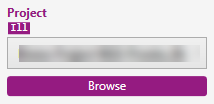
 PacBio subreads data;
PacBio subreads data;  Ion torrent data;
Ion torrent data;  Illumina data;
Illumina data; Oxford Nanopore data;
Oxford Nanopore data; ![]() MGI Tech;
MGI Tech; ![]() Other
Other
The location where the data of the current project is stored can be located by means of a right mouse click on the data folder. Subsequently select either 'Copy path' or 'Open folder in file explorer'.
